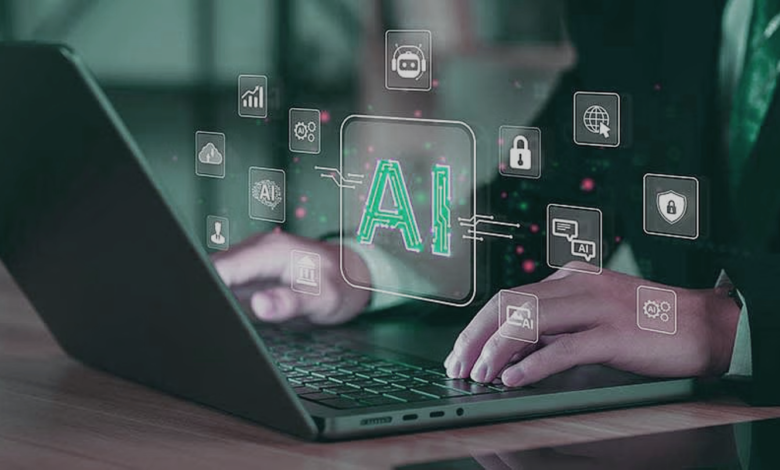The Power of Artificial Intelligence Tools: How They Can Boost Your Productivity
Boost productivity with AI tools. Learn how artificial intelligence automates tasks, saves time & enhances work performance in 2024.

The power of Artificial Intelligence tools is reshaping the modern workplace, offering unprecedented opportunities to enhance efficiency and streamline operations. In an era where time is the most valuable currency, these intelligent systems are revolutionizing how we approach tasks—from automating routine processes to generating data-driven insights. Whether you’re a business leader, creative professional, or student, AI-powered solutions can help you work smarter, not harder, by handling repetitive chores and freeing up mental space for innovation.
As adoption grows across industries, understanding the power of AI tools becomes essential for staying competitive. These technologies are no longer limited to tech giants; they are now accessible tools that anyone can leverage to optimize workflows, improve accuracy, and accelerate decision-making. This article explores how AI is transforming productivity, the key tools leading this change, and practical ways to integrate them into your daily routine for maximum impact.
The Power of Artificial Intelligence Tools
The Evolution of AI in Productivity Enhancement
Artificial Intelligence has evolved from basic automation to sophisticated decision-making systems capable of learning and adapting. Early AI tools were limited to rule-based tasks, but modern machine learning and natural language processing (NLP) enable them to handle complex operations. Today, AI-driven platforms like ChatGPT, Grammarly, and Trello with AI integrations assist in writing, scheduling, and collaboration, reducing human effort while improving accuracy. The shift from manual processes to AI-augmented workflows has significantly cut down time spent on mundane tasks, allowing professionals to focus on strategic initiatives.
Key Artificial Intelligence Tools Revolutionizing Work Efficiency
Content Creation & Writing Assistance
AI-powered writing tools such as Jasper, Copy.ai, and Writesonic help generate high-quality content in minutes. These platforms analyze input prompts and produce drafts, marketing copy, or even technical reports with minimal human intervention. Grammarly and Hemingway Editor refine grammar, tone, and readability, ensuring polished output. For businesses, this means faster content production without sacrificing quality, enabling marketers and writers to meet tight deadlines effortlessly.
Project Management & Automation
Tools like Asana, ClickUp, and Notion now integrate AI to optimize task delegation, predict project timelines, and automate reminders. AI algorithms analyze past project data to suggest improvements, allocate resources efficiently, and flag potential bottlenecks. This reduces managerial overhead and enhances team coordination, ensuring projects stay on track.
Data Analysis & Decision-Making
AI-driven analytics platforms like Tableau, Power BI, and Google’s AI tools process vast datasets to uncover trends and generate actionable insights. Businesses leverage predictive analytics to forecast market changes, customer behavior, and operational inefficiencies. This data-centric approach empowers leaders to make informed decisions swiftly, gaining a competitive edge.
Customer Support & Chatbots
AI chatbots like Zendesk Answer Bot and Intercom handle customer queries 24/7, reducing response times and operational costs. Natural language processing allows these bots to understand and resolve issues without human intervention, improving customer satisfaction while freeing up support teams for complex cases.
Personal Productivity & Time Management
AI personal assistants like Microsoft Copilot and Reclaim.ai optimize schedules by prioritizing tasks, setting reminders, and even drafting emails. These tools learn user preferences over time, offering tailored suggestions to enhance daily productivity.
The Impact of AI on Different Industries
Healthcare
AI tools assist in diagnostics, drug discovery, and patient management. Platforms like IBM Watson analyze medical records to recommend treatments, while AI-powered imaging tools detect anomalies in X-rays and MRIs with high precision.
Education
Adaptive learning platforms like Coursera and Khan Academy use Artificial Intelligence to personalize coursework based on student performance. AI tutors provide instant feedback, making education more accessible and effective.
Finance
Fraud detection algorithms and robo-advisors like Betterment automate investment strategies and risk assessments, improving financial plan and security.
Marketing
AI analyzes consumer behavior to optimize ad targeting, email campaigns, and SEO strategies. Tools like HubSpot and Marketo predict customer needs, boosting engagement and conversion rates.
Challenges & Ethical Considerations
Despite their benefits, AI tools raise concerns about data privacy, job displacement, and algorithmic bias. Organizations must implement ethical AI practices, ensuring transparency and accountability. Human oversight remains crucial to prevent misuse and maintain trust in AI systems.
How to Integrate AI Tools into Your Workflow
Integrating AI tools into your daily operations can significantly enhance productivity, but it requires a structured approach. Below is a detailed, step-by-step guide to seamlessly incorporate AI into your workflow for maximum efficiency.
Identify Pain Points & Set Clear Goals
Analyze which tasks consume excessive time or require repetitive effort (e.g., data entry, email responses, content creation). Determine what you want AI to solve—speed, accuracy, automation, or decision-making support. Focus on high-impact areas where AI can deliver immediate benefits.
Start Small & Pilot Test
Avoid overwhelming your team by rolling out a single AI solution first. Implement AI for a specific task (e.g., automating meeting summaries with Fireflies.ai). Track time saved, error reduction, and output quality.
Train Your Team & Encourage Adoption
Conduct workshops or tutorials to familiarize users with the Artificial Intelligence tool. Explain how AI augments (not replaces) their roles by eliminating tedious tasks. Designate team members to troubleshoot and motivate others.
Automate Repetitive Tasks First
Use AI like SaneBox or Outlook’s Copilot to prioritize and draft responses. Tools like Reclaim.ai or Clockwise optimize calendars based on priorities. AI-powered OCR tools (e.g., Nanonets) extract and process data automatically.
Integrate AI with Existing Systems
Connect AI tools to your CRM (HubSpot, Salesforce), communication apps (Slack, Teams), or cloud storage (Google Drive, Dropbox). Use Zapier or Make (formerly Integromat) to sync AI workflows across apps.
Monitor, Optimize & Scale
Ask users about challenges and benefits post-implementation. Compare pre- and post-AI productivity (e.g., task completion time, error rates). Gradually introduce more AI tools based on successful pilots.
Ensure Data Security & Ethical Use
Confirm AI vendors comply with GDPR, HIPAA, or industry regulations. Avoid inputting confidential information into public AI models. Regularly check for biases, especially in hiring or customer-facing applications.
Stay Updated with AI Advancements
Subscribe to newsletters (e.g., MIT Tech Review, AI Weekly). New features (like GPT-4o or Gemini Advanced) may offer better efficiency.
Balance AI & Human Judgment
Use AI for Drafts, Humans for Final Edits (e.g., ChatGPT-generated content reviewed by writers). Critical decisions (financial, legal, medical) should always involve human review.
Read More: The Best Productivity Apps for Students in 2025
Conclusion
The power of AI tools lies in their ability to transform productivity across industries, automating routine tasks and enabling smarter decision-making. From content creation to customer service, these technologies save time, reduce errors, and unlock new levels of efficiency. However, successful integration requires strategic planning and ethical considerations to balance innovation with responsibility.
As AI continues to evolve, staying updated with the latest tools and trends will be crucial for maintaining a competitive edge. By embracing AI-driven solutions, individuals and businesses can achieve unprecedented growth, turning challenges into opportunities. The future of productivity is here—harnessing the power of AI tools is no longer optional but essential for success in the digital age.
FAQs
How do Artificial Intelligence tools improve productivity?
AI tools automate repetitive tasks, provide data-driven insights, and streamline workflows, allowing users to focus on high-value activities.
Are Artificial Intelligence tools difficult to implement?
Most Artificial Intelligence tools are user-friendly, with many offering tutorials and customer support. Starting with one tool simplifies the learning curve.
Can Artificial Intelligence replace human jobs?
While Artificial Intelligence automates certain tasks, it primarily augments human work, creating new roles and enhancing existing ones.
What industries benefit most from Artificial Intelligence?
Healthcare, finance, marketing, and education see significant productivity gains through Artificial Intelligence adoption.
How can businesses ensure ethical Artificial Intelligence use?
Transparent algorithms, bias checks, and human oversight help maintain ethical Artificial Intelligence practices.







